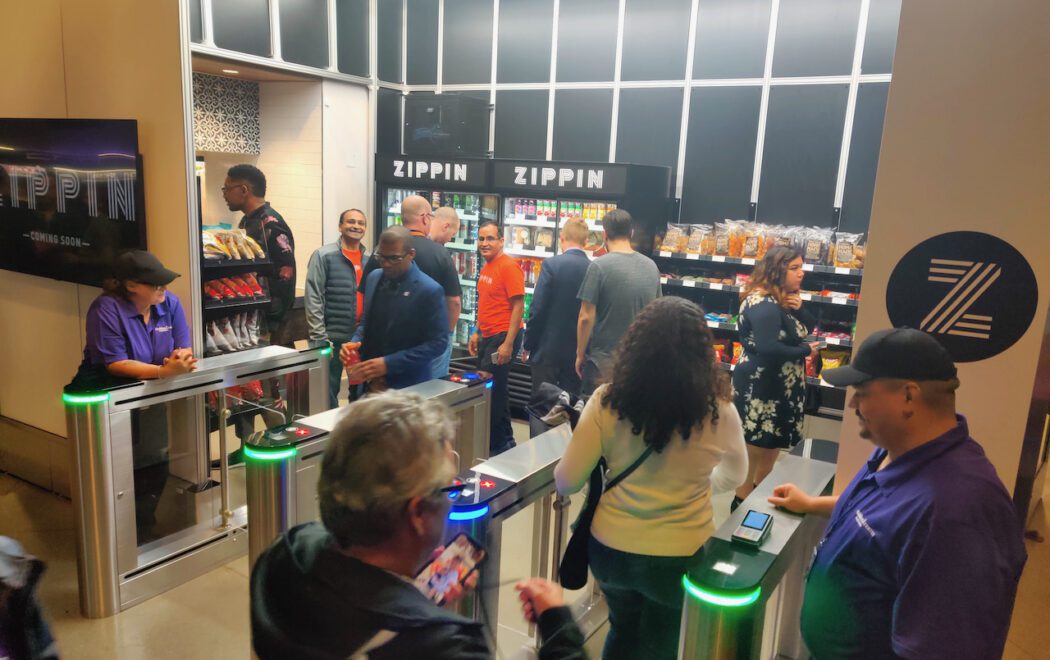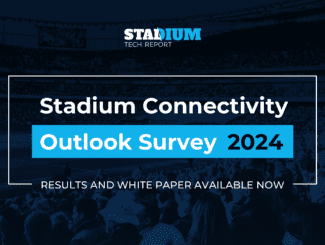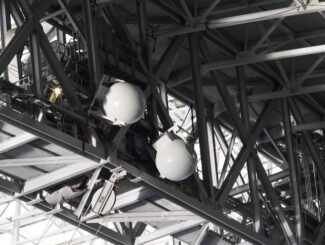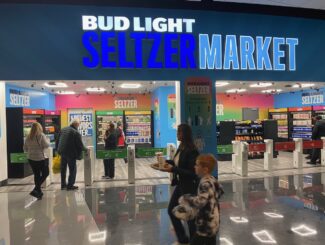
Goodbye, old-style walk-up concessions stand. I won’t miss you.
I won’t miss waiting in line behind someone who is “buying for everyone,” trying to remember food and drink combinations for the family or the group of friends, then watching concession-stand employees ring up an order, put food items together, take payment and make change.
These things should have disappeared from stadiums long ago, but they persisted. If there is one silver lining to the Covid pandemic, it may be that the safety and security precautions needed to bring fans back into large public venues — which include being able to feed and water those people spending time in your building — have finally pushed needed change upon stadium concessions operations.
From conversations we’ve had here at Stadium Tech Report with industry thought leaders as well as with stadiums and venues who have been moving forward during the past year, it’s become clear that one of the biggest areas of technology activity and experiments is around concessions. Some of that has to do with the need to keep fans socially distanced during the pandemic, and also to reduce human-to-human contact as much as possible. But it’s also clear that some ideas being tested right now might well become the “new normal” going forward. And that’s good news all around.
Speeding up the process
To be sure, the process toward things like digital tickets and cash-free concessions has been building in the stadium ecosystem for some time. In many such businesses like fast food and airlines, kiosks and mobile ordering systems have replaced talking to another human across a counter, perhaps with some loss of personality but with huge leaps in efficiency, safety and getting exactly what you ordered with much less waiting.
So why did the past persist at stadiums?
For the majority of venues who kept the old methods, you could point to the fact that they may have felt there was no compelling reason to “fix what wasn’t broke.” There might be some grumbling about lines, but it wasn’t a deal-breaker for most fans. All was well, right?
Well, not really. For the non-premium attendee, many events in many buildings still had the problem of old-fashioned walk-up concession stands, where you could spend a full baseball inning or a good chunk of a football quarter just waiting for a simple hot dog and a beer.
It’s not like teams and venues didn’t ever try to address the issue of fans having to spend active game time waiting for food or drink (or for restrooms). When the San Francisco 49ers opened Levi’s Stadium in 2014, the plan was to allow fans to place a mobile concessions order and have it delivered — to any seat in the stadium. While it was a commendable effort, there were too many things wrong with the attempt, including the human equation of just having enough runners to deliver the goods.
There were also some new ideas, like the line-length signs powered by new systems from companies like WaitTime, that began sprouting up — but what those technologies didn’t really address was why there were lines in the first place.
Enter the pandemic
If there was one “simple” fix to shortening lines, it would be eliminating cash payments — it’s simple math, since it is far faster to swipe a card than it is to pass bills and coins back and forth.
While some stadiums, like Mercedes-Benz Stadium in Atlanta, actually took the plunge to a cash-free concessions environment before the pandemic, the balance of venues kept the ability for fans to use paper money
But the Covid-19 pandemic — and the safety measures needed to safely allow fans back in big public buildings — made cash transactions undesirable. In just about every venue that opened to limited attendance during the past 12 months, all concessions transactions were digital.
So far, I haven’t heard any widespread complaints about the practice, which leads me to believe that cashless, or cash-free concessions, will likely become the norm going forward. And for fans, teams and venues, I think it’s a good idea.
What you can do when everything’s digital
From a venue owner’s or operator’s point of view, all-digital payments are a far superior choice, for many reasons. Beyond the streamlining of business processes that come with eliminating cash drawers comes better security, and faster and more accurate business data tracking.
An all-digital environment also allows teams and stadiums to more closely integrate loyalty programs and things like points with actual payments; it also gives fans an incentive or purpose to use a team or stadium app, something many fans have historically avoided. Stadium app provider Venuetize, for one, has racked up a few recent customer wins (Globe Life Field, San Jose Sharks) as teams seek to put more transactional power into their stadium and team apps.
Greater integration of payment technology was one of the main reasons behind the recent purchase of app and transaction-process software provider VenueNext for $72 million by Shift4, a large payment-processing company.
From a fan’s point of view, the improvements in concessions technology should be sudden and noticeable. Already, we’ve seen forward-thinking venues like Sacramento’s Golden 1 Center and Denver’s Empower Field at Mile High take bold steps to reformat concessions with an eye toward grab-and-go functionality.
Kiosks and express or timed pickups
Concessions back-end software and hardware provider Appetize has been bullish on kiosk systems going forward, with multiple business wins during the pandemic for new installations at places like the Green Bay Packers’ Lambeau Field, getting ready for the eventual return of fans.
And while the shift might mean an end to some desirable jobs, like the row-by-row beer salesperson, the idea of passing a cup of draft from hand to hand down a row — and then also passing paper money back and forth — is something that is probably never going to return. As a young adult going to games at my beloved home venue Wrigley Field, the remembered calls of “Old Style! Cold Beer!” evoke warm memories and were part of the great ballpark experience. As much as I might miss that, I’m looking forward to a future of returning safely to venues and spending much, much less time in lines.








